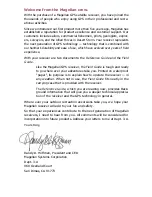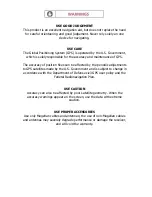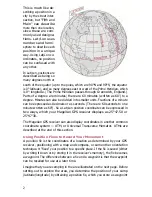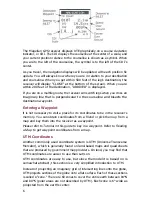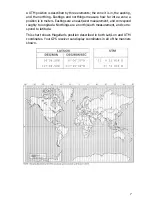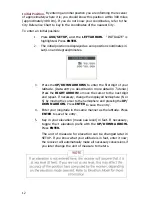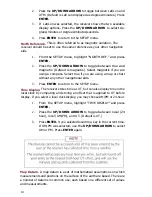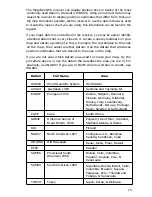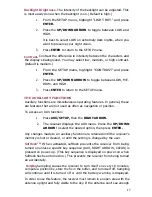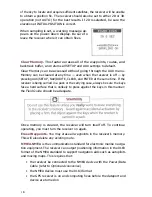
The first thing you have to do is to
return to your skiff, which you do
by getting a current position fix,
then setting a Direct-To course. A
Direct-To course is a straight line
from your current position to the
waypoint you select. Here, the
Direct-To course is to waypoint "IN-
LET".
The Direct-To function will tell you
the distance and bearing from the
present position to INLET. Bearing
is the relative direction of the des-
tination with respect to north.
Distance is a great circle measurement, which means that it is the shortest
distance between two points along the curved surface of the earth. Measure-
ments made on a map are rhumb line measurements, or the shortest distance
between two points on a flat surface. When projected back to the globe, it
is apparent that the rhumb line measurement is both less direct and longer
than the great circle measurement, though the difference between the two
may be slight over short distances.
As you move toward INLET, you have both speed and direction of movement.
Speed is SOG, or speed over ground (sometimes referred to as groundspeed).
The direction you are
moving is your track, or
COG (course over
ground). In this ex-
ample, COG is about
275°T. If you stay on
your intended course,
COG will be the same
as bearing to the in-
tended destination.
Time to go (TTG) is based on the distance to the destination and how quickly
you are moving toward it.
I
4
If you stray off course while using the GPS receiver, the receiver will
indicate the degree and direction of your error, and a steering correction.
(This is described in more detail in
Navigating with a Route.)
Summary of Contents for Trailblazer
Page 1: ...Magellan GPS Satellite Navigator Reference Guide...
Page 24: ...20...
Page 31: ...27...
Page 41: ...960 Overland Court San Dimas CA 91773 909 394 5000 22 60005 012...


